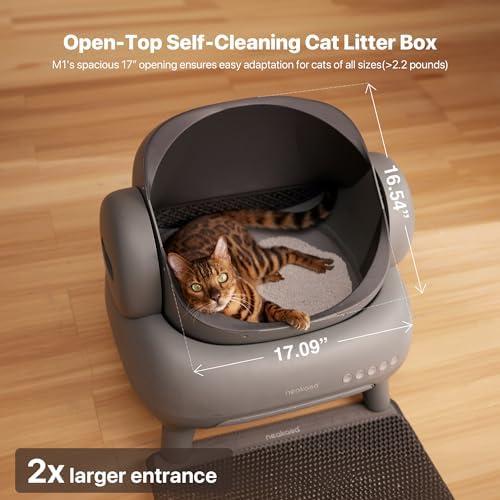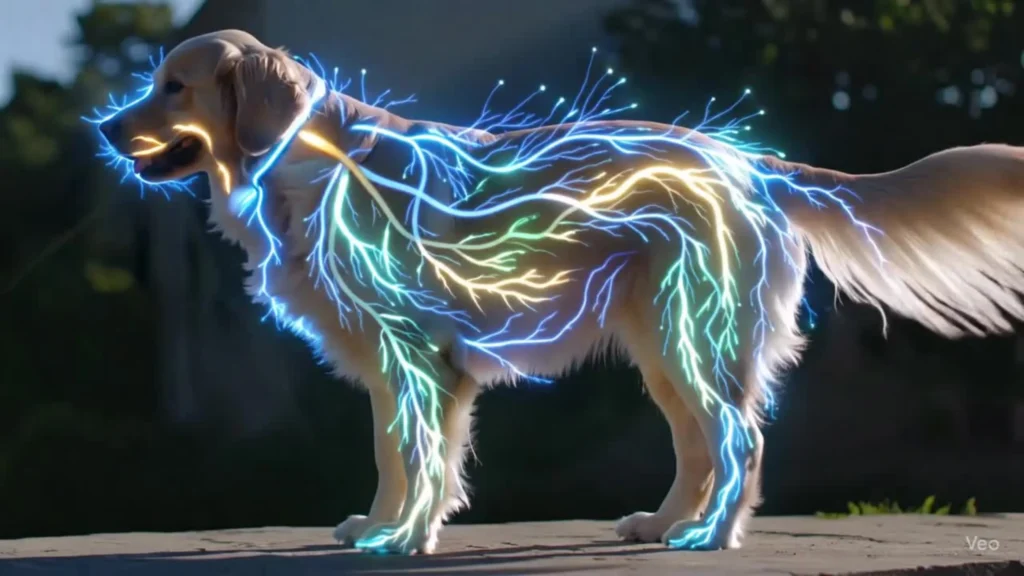Decoding Cat Tail Wags, Complex Meanings, is like unraveling a fun mystery with your feline friend. You may not realize it, but your cat’s tail is a powerful communicator. From happy bounces to twitchy tips, every movement tells a story. In this article, we’ll explore various tail positions and what they mean.
Get ready to understand your cat’s feelings better and connect with them in a whole new way!
Key Insights
- Your cat’s tail shows how they feel.
- A high tail means your cat is happy.
- A low tail can mean your cat is scared.
- A puffed-up tail means your cat is upset or scared.
- A slow wag may show curiosity or uncertainty.

Summary
Understanding Cat Communication: The Importance of Tail Movements
When it comes to understanding our feline friends, their tails can tell us a lot. It’s fascinating how much meaning can be packed into those swishing, twitching appendages. A cat’s tail isn’t just for balance or decoration; it’s a key part of their communication toolkit.
Cats can’t talk like we do, but they have their own ways of expressing feelings and intentions. Their tails play a huge role in that. Whether your kitty is feeling playful, anxious, or relaxed, their tail movements give you a sneak peek into their emotional world. Paying attention to those little flicks and sways can help you bond better with your furry companion.
Decoding Cat Tail Wags: What Do They Really Mean?
Okay, let’s dive into the nitty-gritty of tail wags. You might think that a wagging tail is a universal sign of happiness, but with cats, it’s a bit more complex.
For instance, if you see your cat wagging its tail slowly, it might just be focused on something – like a bird outside the window. But if the tail is whipping back and forth rapidly, that could be a sign of agitation or annoyance. It’s like when you’re trying to concentrate, and someone keeps interrupting you. Frustrating, right?
And then there’s the classic half-mast position. If your cat’s tail is held up high but not completely erect, it usually indicates that they’re feeling pretty chill. It’s a good sign that they’re comfortable and content. So, next time you see that tail position, you can breathe a little easier knowing your kitty is in a good place.
The Different Cat Tail Positions and Their Meanings
Now, let’s break down some common tail positions and what they mean. This isn’t just about wagging; it’s about the whole spectrum of tail language.
- High and Proud: When your cat holds its tail high, that’s a clear signal of confidence and happiness. They’re feeling good about themselves, and they might even be strutting around like they own the place (which, let’s be honest, they probably do).
- Straight Up with a Curve: This position often indicates friendliness. It’s like your cat is saying, Hey there! I’m happy to see you! It’s a welcoming posture, so feel free to give them some love.
- Low and Tucked: If your cat’s tail is low or tucked between their legs, they might be feeling scared or submissive. Think of it as their way of saying, I’m not a threat, please don’t hurt me. It’s a good idea to give them some space when you see this.
- Puffed Up: A puffed-up tail is a classic sign of fear or aggression. It’s as if your cat is trying to make itself look bigger and more intimidating. If you see this, it’s best to back off and let your kitty calm down.
- Slowly Swishing: As mentioned earlier, a slow wag can indicate focus or curiosity. Your cat might be stalking a toy or watching something move. It’s their way of honing in on their target.
- Rapid Flicking: If your cat’s tail is flicking back and forth quickly, it’s often a sign of irritation. They might be feeling annoyed, especially if you’re trying to pet them when they’re not in the mood.
- Curled Around Another Cat or You: This is a sign of affection and trust. If your cat wraps its tail around you or another cat, it’s like they’re giving a warm hug. It’s a sweet gesture that means they feel safe.
Emotional Cues in Cats: How Tail Movements Reflect Feelings
Understanding your cat’s tail movements can be like reading a book. Each flick or position tells a story about what they’re feeling.
For example, if your cat’s tail is high and quivering, it could mean they’re excited or happy, like when they see their favorite toy. Conversely, if their tail is low and twitching, they might be feeling threatened or anxious. It’s their way of expressing discomfort.
Have you ever noticed how your cat’s tail behaves when you’re about to feed them? It might start swishing back and forth in anticipation. That’s a mix of excitement and impatience. They’re ready for that delicious meal, and their tail is showing it!
Cats can also communicate with their tails when they’re playing. If they’re in a playful mood, you might see their tail flicking rapidly as they pounce on a toy. It’s like they’re saying, I’m ready for some fun!
But here’s the kicker: tail movements can vary from cat to cat. Each feline has its own personality and ways of expressing itself. While these general guidelines can help, it’s essential to get to know your individual cat’s tail language.
Interpreting Cat Tail Movements: A Guide to Feline Body Language
Alright, let’s take a deeper look at how to interpret those tail movements in the context of your cat’s overall body language. It’s all about the bigger picture here.
- Tail Position Ears: Pay attention to your cat’s ears too. If their tail is high but their ears are flat against their head, it might indicate that they’re feeling defensive or threatened. On the flip side, if their tail is high and their ears are perked up, they’re likely feeling confident and curious.
- Tail Movements Body Posture: A relaxed body posture combined with a high tail often means your cat is feeling good. But if their body is tense and their tail is flicking, it’s a sign that something’s bothering them.
- Tail Movements Vocalizations: Sometimes, you might notice your cat vocalizing while their tail is moving. A happy meow with a high tail can indicate joy, while a low growl with a twitching tail often signals irritation or displeasure.
- Context Matters: Always consider the situation. If your cat is in a new environment or around unfamiliar people, their tail movements might reflect their uncertainty. They might be more cautious than usual, and their tail could be lower or twitching more than normal.
- Personal Experience: I’ve had my fair share of tail-wagging moments with my cat. One time, I was playing with a feather toy, and her tail was flicking like crazy. I thought she was having a blast, but then she suddenly stopped and swatted at the toy. Turns out, she was more annoyed than entertained!
Tail Wagging Significance: When It’s Happy and When It’s Not
So, when is tail wagging a good thing, and when should it raise a red flag? It’s all about context and the specific movements.
- Happy Tail Wagging: If your cat is wagging its tail slowly while sitting or standing upright, it’s usually a sign of contentment. They might be enjoying a cozy cuddle session or just feeling relaxed in their space.
- Playful Tail Wagging: During playtime, a wagging tail can indicate excitement. If your cat is chasing a toy or pouncing around, their tail might be flicking back and forth in pure joy.
- Agitated Tail Wagging: On the other hand, if you see rapid tail flicking or twitching, especially if accompanied by other signs of irritation (like flattened ears), it’s a signal that your cat is not happy. It’s best to give them some space and let them cool off.
- Aggressive Tail Wagging: A puffed-up tail with quick movements can indicate aggression. If your cat feels threatened or cornered, their tail might be waving aggressively as a warning. It’s a clear sign to back off.
- Anxious Tail Wagging: Sometimes, a cat might wag its tail when they’re feeling anxious or uncertain. If they’re in a new environment or around unfamiliar people, their tail movements might reflect their unease.
Tips for Observing Your Cat’s Tail: Understanding Cat Behavior
Now that we’ve covered a lot about tail movements, here are some practical tips for observing your cat’s tail and understanding their behavior better:
- Watch for Patterns: Take note of how your cat’s tail movements change in different situations. Is it more relaxed at home but more twitchy when meeting new people? Understanding these patterns can help you gauge their comfort level.
- Combine with Other Signals: Don’t just focus on the tail. Look at their ears, eyes, and body posture too. This will give you a fuller picture of how they’re feeling.
- Create a Calm Environment: If you notice your cat’s tail is often low or twitching, consider what’s happening in their environment. A noisy household or frequent visitors might be causing stress. Creating a calm space can help.
- Engage in Play: Playtime can be a great way to observe your cat’s tail movements in a fun context. Use toys that encourage natural hunting behaviors, and watch how their tail responds during play.
- Be Patient: It might take some time to fully understand your cat’s tail language. Just like any relationship, it’s about getting to know one another. Spend time with your cat, and observe their reactions to different situations.
- Document Their Behavior: If you’re really curious, consider keeping a journal of your cat’s tail movements and behaviors. Note down what situations trigger different tail positions. This can help you identify patterns over time.

Conclusion
In a nutshell, decoding your cat’s tail movements is like unlocking a treasure chest of emotions and intentions. Each flick, wag, and position tells you a different story about how your furry friend feels. From the high and proud tail signaling happiness to the puffed-up tail indicating fear, understanding these signals can deepen your bond with your cat. So, the next time you observe those tail movements, remember: you’re not just watching; you’re engaging in a silent conversation that speaks volumes.
If you’re eager to learn more about your feline companion and other tech insights, don’t hesitate to check out more articles on Tech Havela. Happy reading!
Frequently Asked Questions
What does it mean when your cat wags their tail slowly?
A slow tail wag can mean your cat is unsure or thinking. It’s like they’re saying, “I’m not sure how I feel right now.”
Why does my cat flick their tail back and forth quickly?
If your cat is flicking their tail, it could be excitement or irritation. It shows they are active and may want your attention.
Is a raised tail a good sign?
Yes! A raised tail usually means your cat is happy and confident. They are saying, “I feel great!”
What does a puffed-up tail indicate?
A puffed-up tail means your cat feels scared or threatened. It’s their way of saying, “I want to look bigger!”
Can tail position affect my cat’s mood?
Absolutely! The position of the tail often reflects their mood. A high tail means happy, while a low one can mean sad or scared.
Why does my cat wag their tail when they are playing?
When your cat wags their tail during play, they are excited. It shows they are having fun and are ready for action!
How can I understand my cat’s tail better?
You can watch their body language! Look at their tail position, movements, and even ears. Decoding cat tail wags, complex meanings is easier when you pay attention.
**Sidnir Vieira**
Founder of TechHavela
A passionate pet and tech content creator, helping dog owners across the U.S. make smarter decisions for their furry friends.



